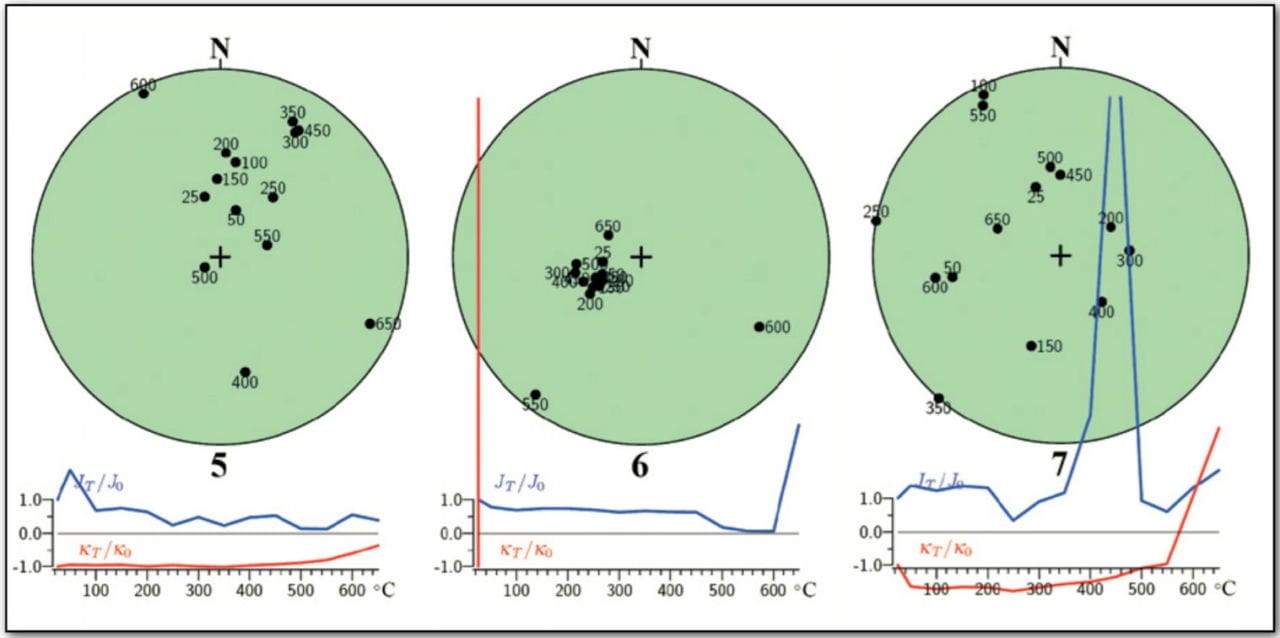A recent scientific study published in the renown “Europhysics News“, The Magazine of the European Physical Society, (2012), Vol. 43, number 6, described how paleomagnetism study on several pyramid stones demonstrates the validity of Davidovits’ theory on the artificial nature of Egyptian pyramid stones.
Two scientists, Dr. Igor Túnyi from Geophysical Institute SAS – Bratislava (Slovak Republic) and Ibrahim A. El-hemaly from National Research Institute of Astronomy and Geophysics – Cairo, Egypt, made the following assumption (quote from their scientific paper):
Our paleomagnetic investigation of the two great Egyptian pyramids, Kufu and Khafre, is based on the assumption that if the blocks were made in situ by the geopolymer concrete technique described above, then their magnetic moments would all have been parallel, oriented approximately in the north-south direction. However, if the pyramids were constructed from blocks transported from the nearby quarries, having been rotated randomly during transport and construction, then the directions of their magnetic moments would be oriented randomly
Conclusion:
The aim of paleomagnetic investigation of the rock material of the great Egyptian pyramids, Khufu and Khafre, was to find out the directions of the magnetic polarization vectors of their building blocks. This is one of the possible ways to verify the hypothesis according to which the blocks were produced in situ by a concrete technique. The analysis of a limited set of paleomagnetic samples provided the following results. The paleodirections of three sampling locations (2 from Khafre and 1 from Khufu pyramid) exhibit the common north-south orientation, suggesting that they may have been produced in situ by a concrete technique. The block from one sampling location of the Khafre pyramid is of natural limestone and evidently comes from the adjacent quarry. It is likely that the block from one sampling position of the Khufu pyramid comes also from the same quarry. Finally, we conclude that even if the geopolymer concrete technique was used, the pyramids were constructed from a mixture of natural and artificial limestone blocks.
See: Igor Túnyi and Ibrahim A. El-hemaly, (2012), Paleomagnetic investigation of the great egyptian pyramids, Europhysics News 43/6, 28-31.
In my book Why the Pharaohs built the Pyramids with Fake Stones, I have clearly shown the location of the natural limestone blocks and terraces (see essentially the Circuit of the Pyramid Plateau at Giza, Egypt, pages 233-262). For example, we know that in the pyramid of Khafre, more than a quarter of the volume of the pyramid is natural stone, namely the terraces carved in the inclined limestone plateau and which constitute the first 5 layers of the pyramid.
 In English
In English En Français
En Français